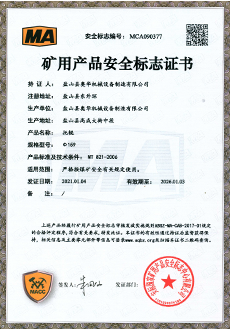 Afrikaans
Afrikaans  Albanian
Albanian  Amharic
Amharic  Arabic
Arabic  Armenian
Armenian  Azerbaijani
Azerbaijani  Basque
Basque  Belarusian
Belarusian  Bengali
Bengali  Bosnian
Bosnian  Bulgarian
Bulgarian  Catalan
Catalan  Cebuano
Cebuano  Corsican
Corsican  Croatian
Croatian  Czech
Czech  Danish
Danish  Dutch
Dutch  English
English  Esperanto
Esperanto  Estonian
Estonian  Finnish
Finnish  French
French  Frisian
Frisian  Galician
Galician  Georgian
Georgian  German
German  Greek
Greek  Gujarati
Gujarati  Haitian Creole
Haitian Creole  hausa
hausa  hawaiian
hawaiian  Hebrew
Hebrew  Hindi
Hindi  Miao
Miao  Hungarian
Hungarian  Icelandic
Icelandic  igbo
igbo  Indonesian
Indonesian  irish
irish  Italian
Italian  Japanese
Japanese  Javanese
Javanese  Kannada
Kannada  kazakh
kazakh  Khmer
Khmer  Rwandese
Rwandese  Korean
Korean  Kurdish
Kurdish  Kyrgyz
Kyrgyz  Lao
Lao  Latin
Latin  Latvian
Latvian  Lithuanian
Lithuanian  Luxembourgish
Luxembourgish  Macedonian
Macedonian  Malgashi
Malgashi  Malay
Malay  Malayalam
Malayalam  Maltese
Maltese  Maori
Maori  Marathi
Marathi  Mongolian
Mongolian  Myanmar
Myanmar  Nepali
Nepali  Norwegian
Norwegian  Norwegian
Norwegian  Occitan
Occitan  Pashto
Pashto  Persian
Persian  Polish
Polish  Portuguese
Portuguese  Punjabi
Punjabi  Romanian
Romanian  Russian
Russian  Samoan
Samoan  Scottish Gaelic
Scottish Gaelic  Serbian
Serbian  Sesotho
Sesotho  Shona
Shona  Sindhi
Sindhi  Sinhala
Sinhala  Slovak
Slovak  Slovenian
Slovenian  Somali
Somali  Spanish
Spanish  Sundanese
Sundanese  Swahili
Swahili  Swedish
Swedish  Tagalog
Tagalog  Tajik
Tajik  Tamil
Tamil  Tatar
Tatar  Telugu
Telugu  Thai
Thai  Turkish
Turkish  Turkmen
Turkmen  Ukrainian
Ukrainian  Urdu
Urdu  Uighur
Uighur  Uzbek
Uzbek  Vietnamese
Vietnamese  Welsh
Welsh  Bantu
Bantu  Yiddish
Yiddish  Yoruba
Yoruba  Zulu
Zulu Understanding the Role and Function of Belt Conveyor Idlers in Efficient Material Handling
Understanding Belt Conveyor Idlers Essential Components in Material Handling
Belt conveyors are integral to various industries, serving a critical role in the transportation of materials. Among the many components that contribute to the efficiency and effectiveness of a belt conveyor system, idlers play a vital role. This article will explore the types, functions, and importance of belt conveyor idlers, shedding light on their contribution to material handling processes.
What are Belt Conveyor Idlers?
Belt conveyor idlers are cylindrical rollers that support the conveyor belt and its load as they move along the conveyor system. Positioned at various intervals along the length of the belt, idlers hold the belt in place and ensure it operates smoothly. They are crucial for maintaining the belt’s alignment, minimizing friction, and extending the system’s lifespan.
Types of Belt Conveyor Idlers
Belt conveyor idlers can be categorized into several types, each designed for specific functions and applications
1. Carrying Idlers These are the most common type of idlers, found at the bottom section of the conveyor. They support the weight of the material being transported and ensure the belt maintains its shape as it carries the load.
2. Return Idlers Located on the upper side of the return section of the conveyor, return idlers support the belt as it returns to the loading point. They help prevent the belt from sagging and ensure a smooth return path.
3. Impact Idlers These idlers absorb the impact of material loading and minimize the risk of damage to the belt. They are commonly used at loading points where bulk materials are dropped onto the conveyor system.
4. Training Idlers Also known as self-aligning idlers, these help in keeping the conveyor belt centered on the frame. Misalignment of the belt can lead to increased wear and tear, making training idlers essential for maintaining proper belt alignment.
5. Specialty Idlers These include spiral, disc, and rubberized idlers that are designed for specific applications, such as handling materials with special properties or working in challenging environments.
belt conveyor idlers

Functions of Belt Conveyor Idlers
The functions of belt conveyor idlers extend far beyond mere support. Here are some key roles they play in a conveyor system
- Load Distribution Idlers distribute the weight of the material evenly across the conveyor belt. This is crucial for preventing excessive wear in specific areas, thereby enhancing the lifespan of the belt.
- Friction Reduction By providing a rolling surface for the belt, idlers reduce friction, which in turn minimizes power consumption and operational costs.
- Belt Tracking Idlers help in keeping the belt aligned throughout its travel. This function is essential as misalignment can lead to belt damage and inefficient operation.
- Shock Absorption Idlers, especially impact idlers, cushion the belt against sudden impacts, thereby reducing strain on both the belt and the entire conveyor system.
Importance of Choosing the Right Idlers
Selecting the appropriate idlers for a specific application is critical for the overall efficiency of the belt conveyor system. Factors to consider include the type of material being transported, the weight of the load, and the environmental conditions. Poorly chosen idlers can lead to increased wear, operational issues, and unscheduled downtime, which can be costly for businesses.
Conclusion
Belt conveyor idlers are foundational components that significantly influence the effectiveness and longevity of conveyor systems. By providing support, reducing friction, ensuring proper alignment, and absorbing shocks, idlers contribute to smoother operations and better material handling. As industries increasingly rely on conveyor systems to enhance productivity, understanding and selecting the right idlers becomes essential. Whether in mining, manufacturing, or bulk handling, investing in high-quality idlers can lead to remarkable improvements in performance and efficiency.
-
Revolutionizing Conveyor Reliability with Advanced Rubber Lagging PulleysNewsJul.22,2025
-
Powering Precision and Durability with Expert Manufacturers of Conveyor ComponentsNewsJul.22,2025
-
Optimizing Conveyor Systems with Advanced Conveyor AccessoriesNewsJul.22,2025
-
Maximize Conveyor Efficiency with Quality Conveyor Idler PulleysNewsJul.22,2025
-
Future-Proof Your Conveyor System with High-Performance Polyurethane RollerNewsJul.22,2025
-
Driving Efficiency Forward with Quality Idlers and RollersNewsJul.22,2025





























